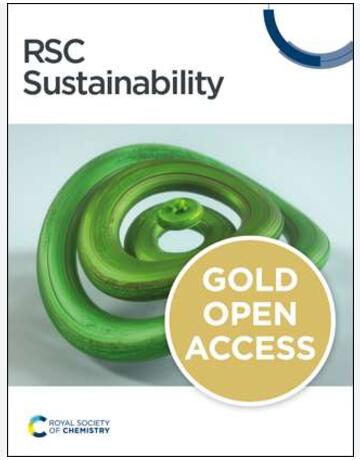采用 HESS 的半主动双向 DC-DC 转换器的非线性模型预测控制中的约束优先级优化电动汽车动力总成性能和可持续性
IF 3.3
3区 环境科学与生态学
Q2 ENVIRONMENTAL SCIENCES
引用次数: 0
摘要
全球交通运输业正迅速向电气化转变,旨在创造更具可持续性的环境。因此,优化电动汽车(EV)电池的性能和延长其使用寿命成为关注的焦点。为此,电池组必须以恒定电流充电和放电模式运行。此外,在电动汽车动力系统中,逆变器输入级保持恒定的直流链路电压对于驱动电机负载至关重要。为了在能量传输过程中同时满足这两个条件,在这项研究工作中,由锂离子电池和超级电容器(SC)组成的混合储能系统(HESS)与双向 DC-DC 转换器(SAT-BDC)的半主动拓扑结构相连。然而,由于同时存在上述两个约束条件:通过跟踪参考值调节直流链路电压和将电池电流保持在恒定值,因此为开关生成占空比以调节 SAT-BDC 的运行非常复杂。因此,本研究旨在通过采用高度灵活的非线性模型预测控制(NMPC)来控制 SAT-BDC 的开关,从而有效地解决这一问题。此外,还使用 MATLAB 2022B 测试了转换器系统设计在电池电流和直流链路电压不同优先级下的运行性能。在 NMPC 方法中,这些约束条件在不同的优先级下进行了仔细评估,这是优化电动汽车动力总成运行的关键权衡因素。研究结果表明,电池电流优先比直流链路电压优先能产生更好的性能,从而延长电池的使用寿命并提高其效率。因此,这项研究工作通过最大限度地减少与电池生产和处置相关的环境影响,进一步符合可持续发展目标的概念实现。本文章由计算机程序翻译,如有差异,请以英文原文为准。
Optimizing EV Powertrain Performance and Sustainability through Constraint Prioritization in Nonlinear Model Predictive Control of Semi-Active Bidirectional DC-DC Converter with HESS
The global transportation sector is rapidly shifting towards electrification, aiming to create more sustainable environments. As a result, there is a significant focus on optimizing performance and increasing the lifespan of batteries in electric vehicles (EVs). To achieve this, the battery pack must operate with constant current charging and discharging modes of operation. Further, in an EV powertrain, maintaining a constant DC link voltage at the input stage of the inverter is crucial for driving the motor load. To satisfy these two conditions simultaneously during the energy transfer, a hybrid energy storage system (HESS) consisting of a lithium–ion battery and a supercapacitor (SC) connected to the semi-active topology of the bidirectional DC–DC converter (SAT-BDC) in this research work. However, generating the duty cycle for the switches to regulate the operation of SAT-BDC is complex due to the simultaneous interaction of the two mentioned constraints: regulating the DC link voltage by tracking the reference and maintaining the battery current at a constant value. Therefore, this research aims to efficiently resolve the issue by incorporating a highly flexible nonlinear model predictive control (NMPC) to control the switches of SAT-BDC. Furthermore, the converter system design is tested for operational performance using MATLAB 2022B with the battery current and the DC link voltage with different priorities. In the NMPC approach, these constraints are carefully evaluated with varying prioritizations, representing a crucial trade-off in optimizing EV powertrain operation. The results demonstrate that battery current prioritization yields better performance than DC link voltage prioritization, extending the lifespan and efficiency of batteries. Thus, this research work further aligns with the conceptual realization of the sustainability goals by minimizing the environmental impact associated with battery production and disposal.
求助全文
通过发布文献求助,成功后即可免费获取论文全文。
去求助
来源期刊

Sustainability
ENVIRONMENTAL SCIENCES-ENVIRONMENTAL SCIENCES
CiteScore
6.80
自引率
20.50%
发文量
14120
审稿时长
17.72 days
期刊介绍:
Sustainability (ISSN 2071-1050) is an international and cross-disciplinary scholarly, open access journal of environmental, cultural, economic and social sustainability of human beings, which provides an advanced forum for studies related to sustainability and sustainable development. It publishes reviews, regular research papers, communications and short notes, and there is no restriction on the length of the papers. Our aim is to encourage scientists to publish their experimental and theoretical research relating to natural sciences, social sciences and humanities in as much detail as possible in order to promote scientific predictions and impact assessments of global change and development. Full experimental and methodical details must be provided so that the results can be reproduced.
 求助内容:
求助内容: 应助结果提醒方式:
应助结果提醒方式:


